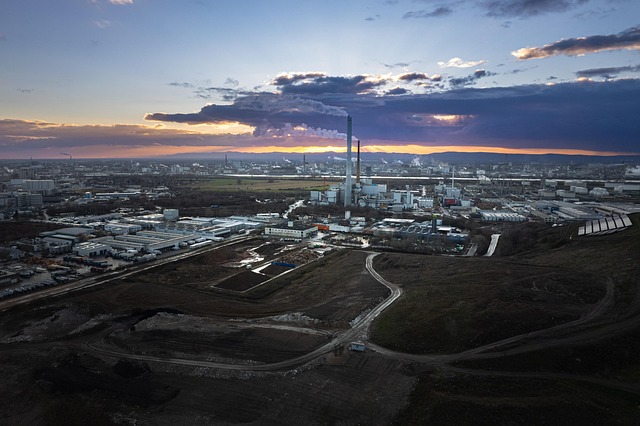In the age of rapid urban expansion, the concept of a “waste island” has emerged as a stark reminder of humanity’s growing ecological debt. These islands—accumulations of discarded plastics, metals, and other refuse—are forming on coastlines, river deltas, and even in the skies. While the visual spectacle of a waste island might seem an isolated environmental blight, its underlying causes—excessive consumption, linear production models, and inadequate waste management—are deeply intertwined with global sustainability goals. Addressing the waste island problem requires a holistic approach that marries green technology, carbon neutrality, and sustainable development into a single, actionable strategy.
Understanding the Waste Island Phenomenon
A waste island is more than a pile of discarded items; it is a complex ecosystem where various materials break down, interact, and sometimes produce new forms of pollution. The term “waste island” is often applied to large clusters of plastic debris, but it can also describe concentrated piles of electronic waste, textile waste, or mixed municipal refuse. These concentrations form because of inadequate collection infrastructure, inefficient sorting processes, and the buoyancy of plastic and other polymers that allow them to accumulate in marine environments. The environmental impact is multifaceted: it threatens marine life, disrupts local economies, and amplifies greenhouse gas emissions through the breakdown of plastics into methane and other potent gases.
Why the Waste Island Matters for Carbon Neutrality
Each waste island represents a missed opportunity for carbon sequestration and an inadvertent source of emissions. When waste is left unmanaged, decomposition produces methane—a greenhouse gas 28 times more potent than CO₂ over a 100‑year horizon. Moreover, the extraction of raw materials for new products continues to fuel fossil‑fuel‑based industries, perpetuating a carbon cycle that is difficult to break. In contrast, a circular approach—where materials are reused, recycled, or transformed into renewable energy—can drastically reduce net emissions. By redefining waste islands as resource hubs rather than refuse dumps, cities can move toward carbon neutrality while preserving ecological integrity.
Green Technologies that Reclaim Waste Islands
Technological innovation is the linchpin of turning waste islands into economic and ecological assets. Below are three key technologies that are already reshaping how municipalities, industries, and communities handle waste.
- Mechanical Sorting and Advanced Imaging – High‑speed conveyor systems paired with AI‑driven optical scanners can separate plastics, metals, and organics at a rate far exceeding manual labor, dramatically improving recovery rates.
- Pyrolysis and Gasification – These thermal processes convert complex waste polymers into syngas, a mix of hydrogen and carbon monoxide, which can be refined into renewable fuels or chemical feedstocks.
- Biodegradable Polymer Research – Developing plastics that break down in less than a year under natural conditions reduces the long‑term persistence of waste islands and eases the burden on recycling infrastructure.
Case Study: The Circular City Initiative
In a coastal city plagued by an annual accumulation of plastic debris, local authorities launched the Circular City Initiative. By integrating advanced imaging systems and community‑driven collection drives, the city recovered 70% of its municipal waste for recycling. Simultaneously, a municipal pyrolysis plant converted 15% of non‑recyclable plastics into renewable electricity, offsetting 12% of the city’s grid consumption. The combined effort reduced the city’s carbon footprint by 4.3%, a significant stride toward its 2030 carbon neutrality target.
Sustainable Development Through Waste Island Reclamation
Reclaiming waste islands is not merely an environmental necessity; it is a catalyst for broader sustainable development goals. By transforming waste into a resource, communities can realize three critical outcomes:
- Economic Resilience – Recycling and renewable energy projects generate jobs, stimulate local economies, and reduce dependence on imported fossil fuels.
- Social Equity – Community‑based waste management initiatives empower marginalized groups, providing them with both employment and a sense of stewardship over local environments.
- Ecological Restoration – Removing waste from ecosystems alleviates stress on wildlife, improves water quality, and supports biodiversity, thereby reinforcing ecosystem services essential to human well‑being.
Integrating Policy and Market Mechanisms
Effective waste island reclamation requires policy frameworks that incentivize green technology adoption and penalize waste mismanagement. Key policy levers include:
- Extended Producer Responsibility (EPR) schemes that hold manufacturers accountable for the end‑of‑life of their products.
- Carbon pricing that internalizes the environmental cost of waste disposal and encourages low‑carbon waste management solutions.
- Public‑private partnerships that fund infrastructure upgrades, such as smart sorting facilities and waste‑to‑energy plants.
The Ecological Footprint of Waste Islands
The ecological footprint is a measure of the land and water area required to sustain a population’s consumption patterns. Waste islands inflate this footprint by necessitating additional land for landfill sites and by creating long‑term environmental damage that cannot be mitigated by simple disposal. Each kilogram of improperly managed plastic can generate a carbon footprint equivalent to transporting 100 kilograms of CO₂ over a distance of 30 kilometers. Therefore, reducing waste island formation directly compresses the ecological footprint, freeing up natural resources for other uses.
Carbon Neutral Pathways for Waste Management
Achieving carbon neutrality in waste management hinges on a balanced approach that combines emission reductions, offsets, and circularity:
- Emissions Reduction – Implement zero‑emission transport for waste collection and adopt renewable energy sources for processing facilities.
- Offsets – Invest in reforestation projects that absorb CO₂ equivalent to the emissions generated by waste processing.
- Circularity – Design products for disassembly, reuse, and recycling, thereby minimizing the need for virgin material extraction.
Future Outlook: Smart Waste Islands
Envision a future where waste islands are monitored in real time through IoT sensors, enabling predictive management and rapid response to illegal dumping. Smart waste management could incorporate blockchain for transparent traceability of recycled materials, ensuring that every gram of plastic recovered is accounted for and verified. Such technologies would not only streamline operations but also build public trust, a critical component for widespread adoption of circular practices.
Community Engagement and Education
Technology and policy alone cannot solve the waste island crisis. Community engagement remains essential. Educational campaigns that explain the benefits of recycling, the dangers of plastic pollution, and the tangible impact of carbon neutrality initiatives can galvanize local action. Schools, NGOs, and faith communities can host clean‑up events, turning passive observers into active participants in the reclamation process.
Conclusion: Reclaiming Waste Islands as a Blueprint for Sustainable Futures
Waste islands serve as a stark indicator of how far humanity has strayed from sustainable consumption patterns. By leveraging green technologies, carbon‑neutral practices, and inclusive policies, we can transform these environmental liabilities into sources of economic growth and ecological resilience. The path to a reduced ecological footprint is paved with reclaimed waste islands, each a testament to human ingenuity and our collective capacity for change. When communities, industries, and governments converge on this common goal, the dream of a truly circular, carbon‑neutral world moves from aspiration to reality.




